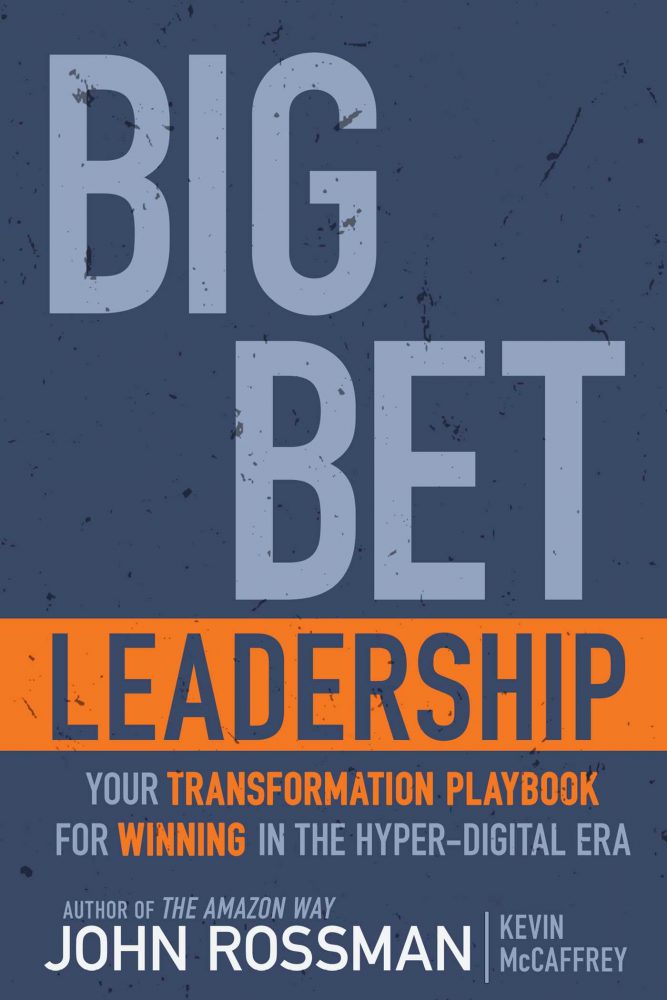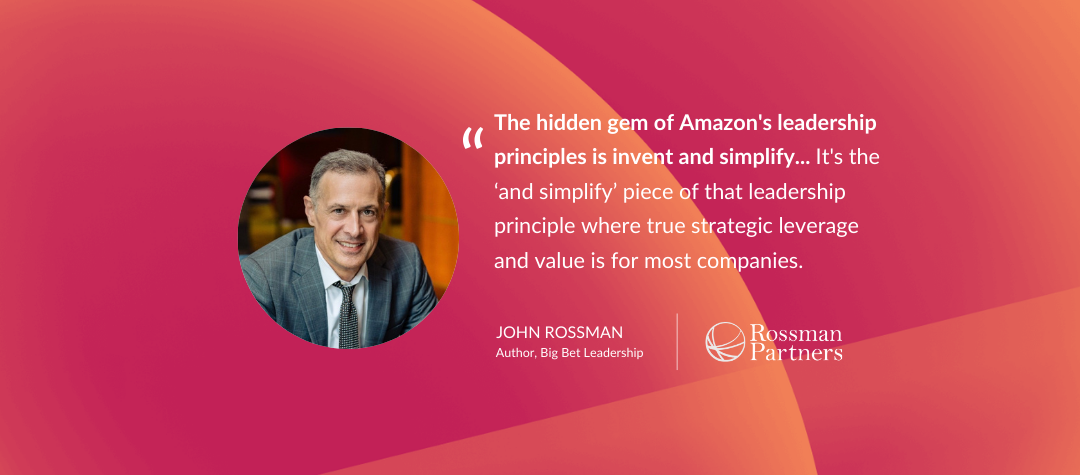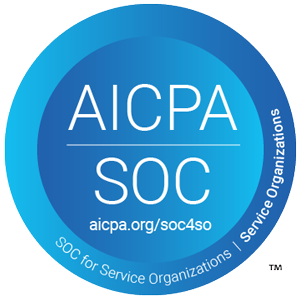Simplifying communication and focusing on big bets are the secrets to unlocking huge returns
Disclaimer: The opinions represented here are those of the individual and do not necessarily represent those of their current or former employer.
The difference between incremental change and market‑shifting innovation often comes down to leadership habits. Few people understand those habits better than John Rossman, former Amazon executive, author of The Amazon Way and Big Bet Leadership, and long‑time advisor to Fortune 500 boards. In a recent Brightidea interview, Rossman pulled back the curtain on how high‑performing organizations create clarity, maintain velocity, and accelerate value while managing risk.
Watch the full interview below, or read on for a selection of key takeaways.
Key takeaways:
- Write narrative memos to de‑risk bold ideas. Written experiments force teams to clarify assumptions, align stakeholders, and validate value early.
- Repeat specific messages until everyone can recite them. Treat every memo as part of a communication portfolio that keeps objectives and milestones clear.
- Simplify processes and workflows with ruthless discipline. Redesign each operation to remove friction and unleash speed and creativity.
- Aim hackathons at high‑value, high‑risk challenges. Give winning ideas the authority, resources, and follow‑through needed to de‑risk and scale into business results.
- Run your innovation pipeline as a balanced portfolio, not a list of sure bets. Allocate resources across transformative ideas while accepting failure to secure wins.
Use Narrative Memos to De-Risk Bold Ideas
Innovation starts with thinking. What’s the best way to capture thinking on complex problems and ideas? Putting them on paper and debating them. Rossman champions Amazon’s famous “working backwards” memo process, writing out ideas in a detailed narrative form, as an effective, high-impact way to flesh out big initiatives. By articulating the end vision, often as a mock press release or detailed proposal, leaders can clarify assumptions, identify risks, and align teams before significant resources are spent. This memo-driven approach forces teams to think through customer benefits, operational challenges, and unknowns early on, which de-risks high-ambition projects and sharpens their value proposition.
“Writing things out is the simplest, fastest, cheapest, most effective way to think things through and to do actual experimentation…Getting to the heart of the matter in a collaborative manner that taps the best everyone can contribute. And—as Brightidea says—allowing the best idea to win, that’s the whole goal.”
These techniques were pioneered at Amazon, where teams draft a press release for a new product before building anything. But the press release is typically a byproduct of hashing ideas out in other narratives and iterating through these memos. The practice has been credited with many of Amazon’s breakthrough innovations. Most of Amazon’s major products since 2004 were created using the “Working Backwards” process, which starts with defining the ideal customer experience and iterating on a narrative until the team achieves total clarity.
If you want to integrate a “Working Backwards” process into your team’s workflow, Brightidea’s Memo solution can help. Memo helps teams build comprehensive roadmaps that keep the customer top of mind while also making it easier to write, collaborate, review, approve, track, and measure the ROI of your entire program. Get your free demo today.
Turn Ambiguity into a Clear Strategy

Rossman stresses that systematic, repetitive communication is a hidden superpower for big‑bet leaders. Treat every memo, meeting, and status update as part of a “communication portfolio” that keeps priorities crystal‑clear and top‑of‑mind. By deliberately repeating the right messages—objectives, customer benefits, next milestones—you reinforce alignment, accelerate decision‑making, and help teams course‑correct quickly when distractions arise.
“You have to do the job of being the chief repeating officer… You have to know what to be repeating…Things like ‘We have to change,’ or ‘We have to do better,’ or ‘We have to improve the customer experience’ are harmful communication because… I’m not telling you what we’re doing. Instead, be specific: ‘Here’s the problem we’re solving, here’s our hypothesis for the future state, and here’s the agile, experimentation‑led journey we’re on.’ That’s what helps people understand the why, the what, and the how.”
Salesforce CEO Marc Benioff nailed this type of communication when he created the V2MOM (Vision, Values, Methods, Obstacles, Measures) as a one‑page document that he shares company‑wide every quarter. Benioff credits “constant communication and complete alignment” around the V2MOM for keeping more than 70,000 employees rowing in the same direction, even as Salesforce scaled globally. By repeatedly cascading and revisiting the same five pillars, leadership ensures that every project, metric, and conversation ties back to the core vision and priorities.
Streamline Processes for Innovation
One surprising insight from Rossman is the strategic power of simplification. In Amazon’s 16 leadership principles, “Invent and Simplify” is well known, and Rossman emphasizes that the “simplify” half is the real gem. Simplification is hard, gritty work. It demands challenging assumptions and possibly redesigning core operations, but it creates an environment where big ideas can flourish without being strangled by complexity.
“I wrote The Amazon Way about Amazon’s leadership principles, and the hidden gem is ‘invent and simplify.’ It’s actually… the ‘and simplify’ piece where most companies find real strategic leverage. Simplifying processes, procedures, requirements, jobs, cycle times, and quality—that is the hardest work… I’m constantly decalcifying enterprises: doing a zero‑base redesign of ‘What’s the input? What’s the output?’ and ‘How do we make that black box of work as fast, efficient, quality‑driven, and measurable as possible?’ I always ask, ‘If we were starting from scratch, is this how we’d design it?’ Usually, the answer is ‘no.’”
Many top companies consciously prioritize simplicity to drive innovation. Nike, for instance, has a management maxim, “Simplify and Go,” which focuses teams on streamlining efforts and moving fast to adapt to new trends. This ethos has helped Nike keep pace in digital and fashion innovation by cutting through red tape and focusing on what matters. Similarly, Ikea bakes simplicity into its products and operations, making it easier to scale new ideas. The lesson: whether it’s product design or internal process, simplifying requires discipline, but it enables speed, creativity, and better execution of innovative ideas.
Make Hackathons Count for Real Impact
Corporate hackathons and innovation programs are meant to spark creativity, but too often they result in “innovation theater,” lots of flash with no follow-through. Rossman calls this the “all hat, no cattle” approach. For leaders, the mission is to redesign these programs so that they truly feed a pipeline of valuable projects. Rossman urges organizations to tackle high-value, high-risk ideas with transformative potential and then systematically de-risk those ideas into viable initiatives.
“Most innovation programs suffer from an ‘all hat, no cattle’ symptom. They’re there to show that we’re innovative, but they’re not put in an environment with the decision-making capability to actually scale the things [that come out]. I’ve seen teams pursue high complexity, low-value concepts. What you want instead is to pursue high-value, high-risk ideas, and then de-risk those over to the low-risk, high-value quadrant.”
When supported properly, hackathons can yield game-changing products. Facebook is a great example: many of its signature features originated from internal hackathons. Facebook’s Timeline profile, the ubiquitous “Like” button, and even Facebook Chat all made their debut as hackathon projects before scaling up to billions of users. The company’s hackathons work because leadership actively reviews projects and allocates resources to develop the best ones. The key takeaway is that with executive backing and a bias for action, hackathon ideas don’t have to die on the vine. They can be nurtured into real business outcomes, turning a fun sprint into a strategic innovation pipeline.
Looking to jumpstart innovation within your team? Check out Brightidea’s Hackathon 5, a platform designed to help organizations run hackathons that turn creative sparks into tangible results.
Manage Innovation Like Investments
Rossman suggests that Chief Innovation Officers (or equivalent roles) should act like portfolio managers or venture investors within the enterprise. Rather than seeking certainty on every project, accept that many initiatives will fail. That’s okay if your overall portfolio yields a few big wins. To drive real growth, innovation leaders need to allocate resources across a spectrum of ideas, from incremental to transformational, and set expectations that a percentage of bold bets will fail.
“Most leaders grew up in an operational world where you’re expected to have success in most things – they think every concept should be a winner. With this mindset, you end up just pursuing low-risk, low-ambition concepts. The way the innovation officer role needs to evolve is to be seen as the portfolio and asset manager of the company’s high-value, high-risk bets.”
Google long used the “70-20-10” allocation model: about 70% of resources go to core businesses, 20% to similar product categories, and 10% to new, high-risk ideas that could become future breakthroughs. This portfolio approach explicitly budgets for uncertainty. Leadership knows that not all of the “10% projects” will succeed, but a few might revolutionize the company. The practice institutionalizes a healthy tolerance for failure and guards against the trap of focusing only on immediate wins.
Innovate and Simplify
Innovation isn’t a side project; it’s a disciplined system that blends narrative clarity, ruthless simplification, structured experimentation, and relentless communication. Rossman’s playbook reminds us that world‑class operators are also world‑class transformers: they write to think, simplify to scale, de‑risk to win, and repeat the right messages until everyone in the organization is rowing in the same direction. To learn more about John Rossman’s leadership strategies, read his book Big Bet Leadership or check out the Big Bet GPT.
If you’re ready to put this playbook to work, pair these leadership habits with the right tools. Brightidea’s Hackathon solution gives your teams the structure, governance, and visibility to turn sparks of creativity into scalable, revenue‑generating bets. Get a demo today.


